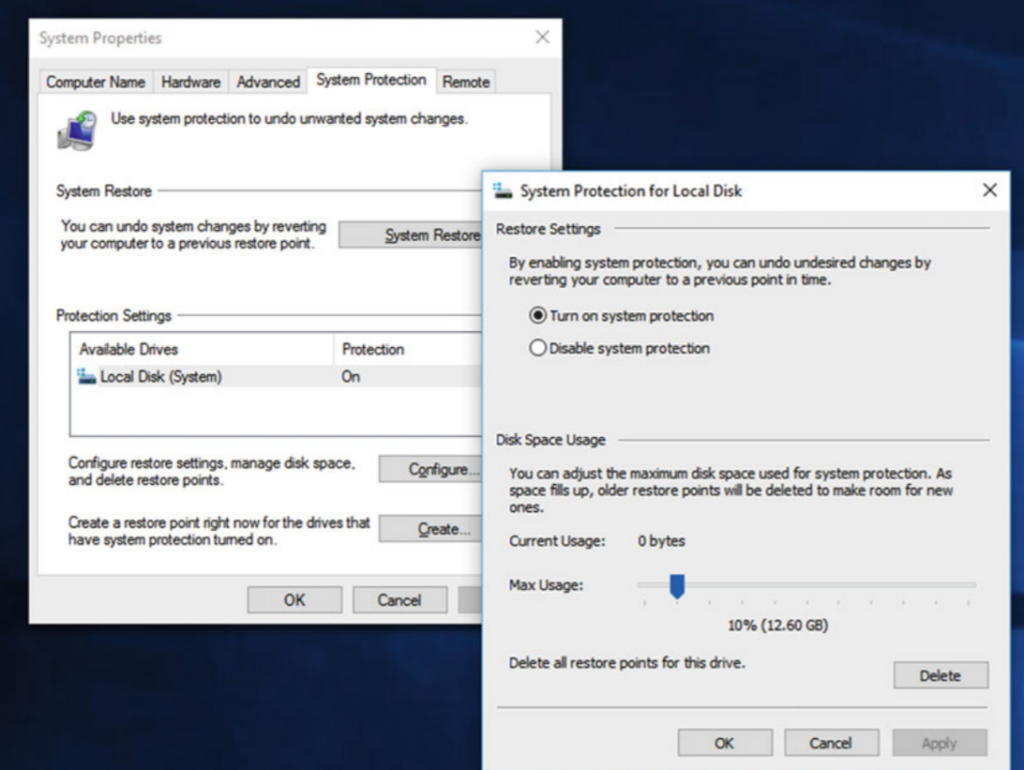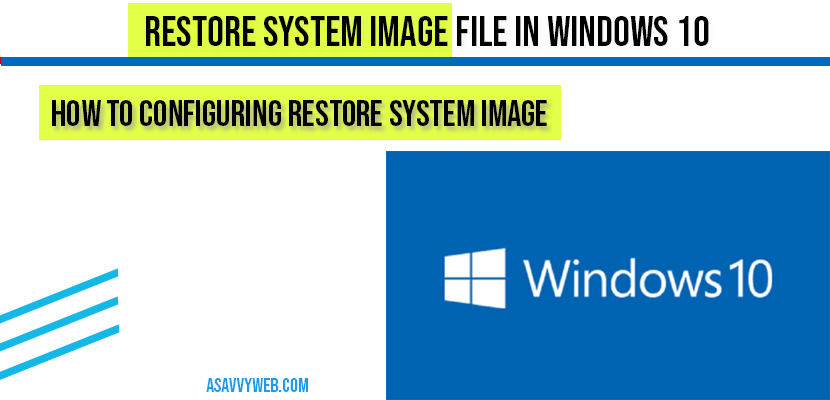You can easily restore System Image Backup from the Windows 10 Recovery Options just like the reset options in windows, once you have are successful by creating system image backup and there are three ways to access these options (Windows 10 starts up far too quickly for the F8 start-up menu). You can open the Settings app, click Update & recovery and in the Recovery section click the Advanced Start-up button. You can also hold down the Shift key on your keyboard while clicking Restart from the Start Menu power options or sign-in screen. You can also start your PC from the USB Recovery Drive that you created. But you have to make sure your PC’s BIOS or UEFI system is set to permit booting from USB devices.
From Recovery Options screen -> click Troubleshoot and then Advanced Options, you will see an option for the restore system image.
By clicking restore system image option, if a system backup image exists on the PC it should be discovered automatically by the system and if no image is found then possibly because you are storing it on a network drive or the disk containing the backup requires a RAID or other hardware driver and then choose the Select a system image option, and click Next.
If you need to search for a network location , you will be asked for the full address of the network folder containing your System Image Backup in the format \\server\share. Instead, you can also click Install a driver to load a RAID or other hardware disk driver.
If you are not aware of this ask your system administrator feasibly because it is managed by your system administrator, you can ask them or, on another PC that also has access to the file share, open its location in File Explorer and then click the icon to the left of address (breadcrumb) bar to reveal the full network address.
Using Windows System Restore Image Backup
System Restore has been around since the days of Windows ME, Luckily, the arrival of User Account Control (UAC) in Windows Vista put an end to that behavior once and for all, and System Restore is now a reliable method to quickly repair a malfunctioning copy of Windows.
What does restore system image do?
Its vital to know what does restore System image does is take a snapshot of critical operating system, driver, and app files when a significant change, such as an app or hardware driver install or removal or a Windows Update is performed. These snapshot files are stored in the hidden System Volume Information folders on your hard disks. Should a change cause something to become unstable or fail to work by restore system image can roll back the change to undo the damage.
How to Access Restore System Image
There are several ways to access System Restore. If the PC is completely unbootable, starting into the Recovery Options perhaps using the USB Recovery Drive you made and clicking Troubleshoot and then Advanced Options will present a System Restore option.
From within Windows 10, you might be unsurprised to hear that searching in the Start Menu or Cortana for the words system and restore won’t display it for you. Searching for just restore however will display the Create a Restore Point option which you can use. Alternatively, opening Recovery from the Control Panel will present links to Open System Restore and Configure System Restore.
If you click Create a Restore Point or Configure System Restore you will be presented with the System Protection options in the System Properties dialog.
Restore Points are created automatically when an app or driver is installed or removed or when Windows Updates are installed. You can click the Create button, though manually create a Restore Point if you are making a change that won’t trigger the automatic creation of a Restore Point, such as moving the Shell User Folders or editing the Registry.
To restore Windows system files, drivers, and apps back to a previous point in time, click the System Restore button or click Open System Restore from the recovery panel. This will open a wizard that explains on its first page what System Restore will do.
At the next page, you will be presented with a list of the most recently created Restore Points. In the bottom left of the dialog is a check box to Show More Restore Points and should show any more exist on the PC.
Choose an appropriate restore system image point and once you have chosen a Restore Point, by clicking it once to highlight it, you can optionally click the Scan for affected programs button to see which apps might be rolled back to previous versions or uninstalled in which you can see that Skype and an update to Google Chrome will be affected.
When you are happy to restore Windows 10, then click the Next button to confirm your actions and begin the System Restore process, during which your PC will restart and should add this works identically when running System Restore from the Recovery Options menu.
How to Configure Restore System Image
System Restore is configured to run automatically by windows on all the drives on your PC. You might have drive files that will never be affected by System Restore. Alternatively, you may wish to increase, or reduce, the amount of space System Restore uses on your Windows drive.
You can easily configure System Restore in the System Properties dialog, accessed by searching for restore in the Start Menu or Cortana. Select the disk you want to change the settings for (there may be several in the list) and click the Configure button.
Next by configuring restore system image, you will be able to enable or disable System Protection which is another way to define System Restore which also includes file, shadow copies for version control of a particular drive and you can easily change amount of disk space System Protection uses.

A quick note on shadow copies of files here, these hook into Windows 10’s File History feature – if activated and allow you to roll back to old versions of files you make a change to a file you didn’t wish to make. File History does not require the drive on which your files are stored to have System Protection activated as you can choose where it stores its backups.

